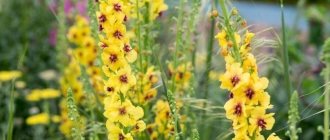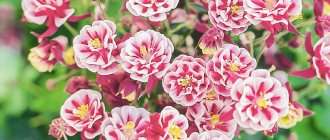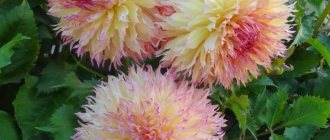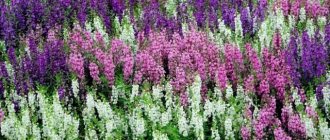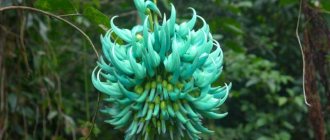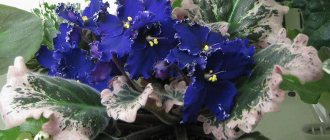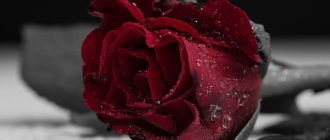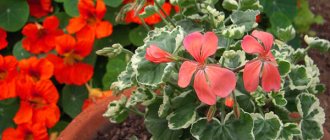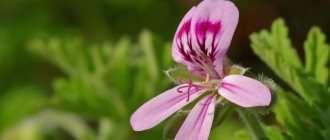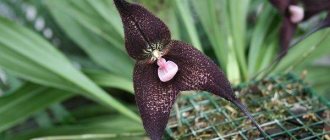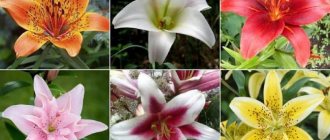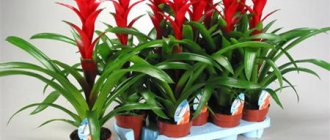Author: IsTOPnik
28 October 2022 09:28
Community : PhotoWorld
Tags: in the world video beauty small flower facts photo flowers
3975
10
1
Flowers are one of the main decorations of our planet. No matter how beautiful works of art a person creates, none of them can compare with the simplest flower; it will surpass both in beauty and aroma.
There are a huge number of flowers on Earth, which differ not only in size, but also in structure and color. There is a separate branch of horticulture called floriculture. Specialists are engaged in growing ornamental plants, developing new varieties that amaze with their beauty. Thanks to the efforts of flower growers, unique plants have been bred, but the smallest flowers in the world can surprise even those who are far from the world of botany.
Faucaria
0
Source:
See all photos in the gallery
The plant belongs to the Aizov family. Its homeland is South Africa, which has a particularly dry climate. It can accumulate moisture in its leaves and other parts, thanks to which it survives during periods when there is practically no precipitation. The name "Faukaria" comes from two Greek words that can be translated as "mouth" and "many". The stem of the plant is very short, and the leaves resemble a toothy mouth. This helps it repel animals that might try to eat it. Faucaria begins to bloom in July or August. The buds begin to bloom from midday to evening and are yellow in color. If the weather is cloudy, the buds are closed. Lasts about 6-8 days. The height of this plant does not exceed 10 cm. Its flowers are quite large, considering the size of Faucalia itself, about 6-7 cm.
Indoor blue flowers
Blue flowers for the windowsill are not limited to a couple of varieties of violets. Of course, they also deserve attention, but we found many more options!
Lisianthus
Lisianthus flowers resemble poppies, only sky blue. There are terry and non-double varieties, as well as more complex shades with a pinkish or lilac undertone.
Photo: d-collection-shop.ru
Clerodendrum
More precisely, Ugandan clerodendrum, because it is famous for its light blue flowers that resemble butterfly wings. It grows very quickly, but only begins to branch with time.
Photo: zen.yandex.ru
Streptocarpus
Among all the blue-violet splendor of streptocarpus, there are also pastel blue varieties. For example, the very popular Constant Nymph, which blooms all summer long.
Photo: zen.yandex.ru
Brovalia
Brovalia is very popular for its unpretentiousness, and also for the fact that even when germinating from seeds, it blooms quickly. Be sure to keep the soil moist at all times.
Photo: m.nn.ru
Saintpaulia
It attracts with its compact size and at the same time very abundant long-lasting flowering. Saintpaulia is also called Uzambara violet, but it needs regular care.
Photo: poradum.com.ua
Ecbolium
An unusual tropical plant that is still little known to our gardeners. Ecbolium grows well in partial shade, reproduces well from cuttings and loves feeding.
Photo: commons.wikimedia.org
Pig
She is also a plumbago. Behind the not-so-picturesque name lies a charming indoor flower. In winter, the pig needs a period of rest in a cool place.
Photo: artfile.ru
Crocus
Crocus is one of those primroses that can be perfectly sprouted at home on a windowsill. White and purple varieties are more common, but blue ones are not uncommon.
Photo: pixabay.com
Sollia
A modest liana with shoots up to 1 m is excellent for indoor gardening. In summer it is covered with drooping blue bells.
Photo: plantmaster.com
La Perusia
Laperusia is a tiny and graceful indoor flower with small, touching inflorescences. If you have nowhere to put huge flowerpots, pay attention to it.
Photo: botanichka.ru
Agapanthus
This is an African lily, which in our latitudes is grown in flowerpots. In summer it can be taken out onto the balcony or into the garden. Agapanthus is a moisture-loving and sun-loving plant.
Photo: aredi.ru
Phlox
Phloxes are completely indifferent to their place of residence, so they feel equally at home in the garden and on the windowsill. Among all the variety of shades, it seems that you can find anything.
Photo: pinterest.com
Lobelia
The flowering fluffy bush is grown in ordinary flowerpots and hanging flowerpots. Lobelia has thin shoots with small leaves and many, many flowers.
Photo: dizainexpert.ru
Heliotrope
Heliotrope can also be grown beautifully in flowerpots and, if desired, taken outside in the summer. Blue inflorescences and vanilla aroma characteristic of curassawa heliotrope.
Photo: greeninhouse.ru
Rebutia
0
Source:
The genus of cacti, which includes 41 species, is called Rebucea. Their homeland is Argentina, Bolivia and Peru. Nowadays these are popular indoor flowers; they are loved because they are miniature in size, unpretentious and constantly bloom. All of these dwarf cacti have spherical stems covered with a large number of spines. Their length is no more than 5-7 cm. The flowers are bright orange, sometimes they can have a yellowish, reddish or pink tint. They appear from April to June. They open during the day, in sunny weather, and close at night. Flowers are usually up to 3 cm in length, the diameter of some of them is up to 6 cm. Each flower lasts for at least 3 days, one individual plant blooms for several months.
Perennial plants with blue flowers
Perennial flower crops develop and bloom in one place for several years. Most often they bloom in the second or third year of life. They reproduce both by seeds and by dividing the bush. These flowers are used in landscape design in single plantings and group compositions. Many of them hibernate outdoors.
Aquilegia
This plant also goes by the names: eagle and columbine. Reaches a height of 40 to 80 cm, has overgrown bushes and single or double flowers with spurs. Aquilegia blooms in May-June. Grows well in any garden soil, both in bright and semi-shaded areas. Mature plants do not tolerate transplantation well. Columbine grows in one place for 3-5 years. Propagated mainly by seeds, less often by dividing the bush.
liverwort
This is a hardy plant with leathery leaves collected in a bunch. Peduncles grow up to 10 cm in height. Liver requires clay soil with humus, frequent watering, and a shady or semi-shady place. The plant propagates by dividing the bush or by seeds.
Mordovnik
The globular flowers of the face attract a beautiful blue hue. Large, deeply dissected leaves are dark green above, lighter below. The plant is suitable for decorating landscape compositions and drawing bouquets of dried flowers.
Delphinium
This is a tall plant, growing up to 2 m. Delphinium has thin stems with pyramidal inflorescences. Flowers with a diameter of 3-7 cm can be single or double. Flowers have spurs on their backs. This feature gave the plant its second name - spurs.
Delphinium blooms in June-July, sometimes again in autumn. The flowers are odorless. The plant prefers calcareous soils and is well fertilized with humus. Easily propagated by sowing seeds, cuttings and dividing roots. Cut inflorescences remain decorative in water for up to 10 days.
Bell
A delicate and fairly common garden plant that decorates the garden for 15 to 90 days (depending on conditions and variety). They prefer sunny areas (with direct rays), but can also grow in partial shade. It is important to avoid standing water and weeds in the surrounding area. Otherwise, the plant does not require serious maintenance.
Agapanthus or African lily
The umbrella inflorescences of this plant complement the garden composition in flower beds or along sidewalk paths. The inflorescences themselves consist of small bright blue flowers. The plant blooms profusely, but not for long - from June to July. Loves sunlight and does not tolerate drought. In areas with cold winters, it is recommended to dig up the bulbs and move them to a warm room for wintering.
Lupine / Lupinus
Mostly one species is grown in gardens: multileaf lupine (Lupinus polyphyllus). A perennial plant up to 120 cm tall, the flowers are collected in multi-flowered racemose inflorescences 30-35 cm long. It blooms in June for 20-30 days. In its natural form the flowers are blue, but cultivars have been developed with red, white, pink, yellow and orange single or bi-color flowers.
Multileaf flower lupine
Of course, the list of plants with blue and blue flowers can be further supplemented and expanded: these are small bulbs (Scilla, Pushkinia and Muscari), these are annuals (asters, petunias), these are also perennials that are not included in our list. We are waiting for your suggestions to expand the list. Write your candidates in the comments.
Geranium / Geranium
Several flowering varieties are of the geranium type. The most fragrant is the Himalayan or large-flowered geranium. Its height is 50 cm. Geranium blooms from May to June and feels most comfortable in partial shade.
.
Veronica dubravnaya
If you want your garden to be full of beauty and grace, plant veronica in your garden. This flower is characterized by blue-blue flowers.
it is easy to care for and can also grow in any area. In the sun's rays, bright flowers look even more aesthetically pleasing.
Looks aesthetically pleasing in the garden
Scabious
This plant is 50-80 cm high with oblong leaves collected in a basal rosette. It blooms from July until frost, grows well in soils fertilized with humus. Prefers open and sunny places, reproduces by dividing the bush and seeds.
Eryngium (eringium)
This beautiful plant prefers hot spots and dry sandy soils. Erythematosus is captivating with its elegance: the blue flower heads are adorned with dissected silver-gray upper leaves. The plant reaches a height of 60-80 cm and blooms in June-August.
Creeping survivor
This plant is frost-resistant and drought-resistant. It can be planted in all types of soil. The peculiarity of this culture is that the tenacious one grows quickly, filling the bald spots in the area.
Persistent flowering begins in late spring and continues until June. Despite the fact that the inflorescences on the bushes last only a few weeks, they will harmoniously decorate your area.
Hardy plant
Erigeron petalata
This unpretentious perennial will not cause any problems for the gardener. It propagates easily and can bloom in one place for 5 years without losing its beauty.
If you want to liven up a dull corner of the garden, then you should plant a small erigeron petal. Fluffy inflorescences combine perfectly with other representatives of the flora, creating a colorful composition.
Brunner
A perennial plant characterized by large leaves located in the root part. The flowers are bluish. The inflorescences are weak.
Reproduction occurs by seeds or division of roots. The procedure is carried out in spring or autumn. The culture needs good moisture. Prefers sunny areas, but can also grow in partial shade.
Broad bell or Platycodon / Platycodon
The plant is 40-80 cm tall, with oval-elliptical serrated leaves and sharp tips. Short bell-shaped flowers with a diameter of 5-7 cm are located on the tips of the shoots in panicle inflorescences.
Platycodon is sensitive to fertilizers, prefers clayey, slightly acidic soils with a sufficient content of humus and a mixture of sand. Propagated by autumn sowing of seeds. After planting it blooms in the third year.
Globularia (globularia)
A herbaceous perennial plant with long leaves collected in dense basal rosettes and stems 5 to 30 cm high. Globularia is perfect for landscaping rock gardens and alpine slides. Flowers without fragrance.
Meconopsis
This perennial plant is also called Himalayan or Tibetan poppy. It is distinguished by its unusual blue coloring of flowers. Meconopsis is native to the highlands of India, China, Burma, Bhutan and Nepal, but has long been widespread throughout Europe. The genus has more than four dozen species, including miniature flowers up to 15 cm tall and powerful two-meter plants.
Subulate Phlox
This creeping perennial forms continuous flower cushions that can become a real decoration of the garden. Subulated phlox is a dwarf form.
Looks great on ridges, edges, rock gardens and along paths. Awl-shaped phlox is used in flower beds as an independent plant and in combination with other flower and ornamental crops.
Kermek
The flower is called statice. The plant has an attractive appearance, so it will beautifully decorate a flower bed. It can be used to create bouquets.
The stems are heavily pubescent. Their height reaches 0.8 m. The flowers have a rich blue tint, but there are varieties with other tones.
Linen
This plant is often used in the production of natural materials. Flax can also be planted as a decoration for the site. Flowers can be of different shades (red, purple and yellow). However, the most popular varieties are those with blue inflorescences.
The crop is propagated by seeds. It should be planted in well-lit areas.
Anagallis
This crop is considered a field crop. Initially it was not popular with gardeners. Subsequently, breeders developed several more varieties, distinguished by deep blue flowers. The bushes evenly and densely cover the soil surface. The height of the plant does not exceed 20 cm.
It is not recommended to over-water the anagallis, as this can lead to rotting. Reproduction occurs by seeds. They need to be planted immediately in mid-spring in a permanent place. Flowering will be bright and abundant if the plant is planted in full sun.
low growing plant
Aconite glomerulosa
An elegant plant with an average height of 80 cm. Glomerular aconite (Aconitum napellus) is covered with large blue panicle inflorescences. Used for small group plantings.
Perennial is a winter-hardy plant. It can grow in one place for up to 8 years.
Gladiolus
A genus of perennials, including numerous species. A popular variety with blue flowers is Blue Mountain).
For gladioli shoots to bloom, they need nutritious, well-warmed soil by the sun.
Depending on the period and environmental conditions, the gladiolus produces purple-blue flowers. Height reaches 120 cm.
Iris
The iris flower has six petals arranged in two circles: three on the outside and three on the inside. The outer petals are curved down, while the inner petals are raised up and often close, which makes the flower unique. Early flowering irises bloom in the first half of May, late ones - in July.
The most common method of vegetative propagation. The plants are undemanding to soil fertility, but grow best on arable land.
Mühlenbeckia
0
Source:
The plant is native to Australia and New Zealand. It is evergreen, from the buckwheat family. There are more than 25 species of it. The length can be from 15 cm to 3 m. The thin stems of Mühlenbeckia are covered with bark, it is brown in color, the leaves can be of different shapes. The inflorescences form clusters, the diameter of one flower is no more than 5 mm. The plant begins to bloom in early August and ends at the end of this month. The flowers are either white or yellowish with a green tint. Many gardeners choose this plant because... it is not susceptible to viral and fungal diseases. It also cleans the air well, is unpretentious, and decorates the room.
Ornamental shrubs with blue flowers
This group of plants decorates the garden from early spring to late autumn. The root system of shrubs penetrates deeply into the soil, and part of the soil can reach a height of several meters. As a rule, most shrubs are quite hardy.
Hydrangea
deciduous ornamental broad-leaved shrub. Its flowers are collected in large inflorescences. Hydrangea requires fertilizer and soil moisture, is light-loving, but can also grow in partial shade. The plant propagates by seeds, layering, offspring, dividing the bush, cuttings and grafting. This lushly flowering shrub looks great both in single plantings and in group compositions.
Blue hydrangea buds will add charm to any garden. It blooms for a long time, delighting with inflorescences ranging from soft blue to dark blue. Alkalinization of the soil only affects the variety of shades of hydrangea.
Many brides prefer hydrangea by including this flower in their bouquet.
Lilac
Spring is not spring without lilacs, especially without lilacs with blue, heavenly fragrant caps. Lilac varieties have been developed in different shades from lilac-blue to light blue. A bouquet of their blue flowers will amaze with its beauty everyone to whom it is presented.
Ceratostigma
This deciduous shrub is highly decorative. In summer and early autumn it blooms with blue flowers, shaped like phlox. In autumn, the leaves of the plant change their green hue to bright red, which gives it an even more attractive appearance.
Ceanothus redroot
It is difficult to find a more decorative bush than a bush so similar to lilac. The shrub is unpretentious, tolerates drought and severe frosts well.
Gorgeous hats with floral patterns can be seen from afar. It is the splendor and beauty that attract gardeners to grow this wonderful shrub.
Clematis
A wide sky-blue flower with original green leaves and long shoots that lift the flowers, highlighting them against the general background of the bush. The plant needs regular and abundant watering, systematic loosening of the soil and organic fertilizers three times a season. If you follow these rules, clematis will delight you with flowering for two months.
Miniature orchid
0
Source:
People call them dwarf orchids. The height of such flowers does not exceed 15-20 cm. On average, they have 5-7 leaves, which remain green throughout the year. Up to 15 flowers grow on one peduncle; sometimes, to prevent the plant from breaking under its weight, support nets are used. The size of the flowers varies, depending on the variety of miniature orchid, it can be from 4 to 7 cm. In the smallest type of mini-orchid, the leaves grow up to 20 cm, and the flowers are about 3-4 cm in diameter. Flowering most often occurs in winter and lasts about a month .
Biennial plants with blue flowers
Biennials are plants that achieve ornamental value in their second year of cultivation. Most of these crops form a rosette of leaves only in the first year. Some of them may bloom, but very weakly. In the second year, the plants develop flowering shoots, bloom profusely and produce seeds.
Biennials reproduce by sowing seeds in April-May, from which seedlings are grown and planted in a permanent place in August-September of the first year. Most of these plants are also capable of vegetative propagation.
Viola
People call this flower “pansy”. Herbaceous plant of low height. The bushes are compact, no more than 30 cm high, the leaf blades have a rich green tint.
Each flower has 5 petals. In cross section, the flowers reach 4-6 cm, depending on the variety. If you plant the giant varieties, they will produce flowers about 10cm in diameter and their petals will have wavy edges. Reproduction occurs by seeds.
Rich flower
Forget-me-not
A low-growing perennial flower garden that will delight the eye all year round, in spring and summer. Forget-me-nots bloom and grow in shady places, in fertile soil soaked in liquid fertilizer. Sowing begins at the end of April, at a distance of 10-20 centimeters from each other, while the bushes are buried deep into the ground. Lack of water and frequent transplants are painful.
Soleirolia
0
Source:
It was found by the English navigator Soleirol; it grew on the islands of Sardinia and Corsica. He was named after the discoverer. In its homeland, soleirolia, or, as it is also called, gelxina, is a low-growing shrub. It is a low plant. The leaves are arranged in pairs, their diameter is about 0.5 cm. The stems are fragile and thin, growing up to 20 cm in length. This small plant can form a luxurious green carpet; in warm countries it is grown on balconies. If you plant it in a pot, it will grow into a small but beautiful ball. The leaves of soleirolia are green, but there are varieties with silver or golden leaves, and they all form small mounds up to 5 cm in height. You should not plant it next to low plants, because... it will destroy them. One of the advantages of the flower is that it perfectly purifies the air. It blooms very rarely in apartments and does not bear fruit. But in nature it is covered with small whitish flowers; when they fade, reddish berries with seeds are formed.
Garden blue flowers
Garden species attract, first of all, their diversity. It would be impossible to come up with so many forms of flowers and inflorescences on purpose, but nature did it!
cornflower
Naturally, this selection would be impossible without cornflowers, so we’ll start with them. Their main advantage is not even beauty, but an amazing combination of fragility and durability.
Photo: homestratosphere.com
Delphinium
Large, tall delphinium inflorescences are collected from dozens of spectacular flowers. But for healthy growth it needs sun, no drafts and light, well-drained soil.
Photo: avto.goodfon.ru
Iris
Due to their bizarre shape, irises vaguely resemble orchids. In combination with long, sharp leaves of a rich green hue, they seem even more expressive.
Photo: pixabay.com
Aconite
Since ancient times, aconites have been surrounded by mystical legends. Moreover, it is believed that the mythical dog Cerberus himself had a paw at his appearance. Aconite is winter-hardy and tolerates replanting well, but it is poisonous.
Photo: zen.yandex.ru
Periwinkle
Another plant, shrouded in a trail of tales and stories. Blue periwinkles are compact, up to 40 cm, and bloom in May with single flowers up to 4 cm in diameter.
Photo: cont.ws
Ayuga
It is also called tenacious, and this is the best characteristic of an unpretentious plant. Ayuga is resistant to frost, drought and lack of sun, and it also grows amazingly quickly into a continuous carpet.
Photo: sergeev.org
Veronica
A herbaceous perennial from the plantain family, it is an amazing ground cover plant for the garden. The oak veronica with small but abundant blue flowers is especially good.
Photo: goodfon.ru
Heliotrope
Dense corymbose inflorescences of heliotrope made of small blue flowers seem delicate. They always face the sun, and heliotrope is also an excellent option for border landscaping.
Photo: zelenj.ru
Hyacinth
The tuberous perennial is famous for its lush racemose inflorescences. Each of them contains up to 45 individual bell flowers.
Photo: megafree2009.blogspot.com
morning glory
A delicate bindweed, or rather a tall vine with heart-shaped leaves, opens its buds in early summer. Large funnel-shaped flowers of all shades of blue decorate the area until frost. Morning glory is good for decorating arches and arbors.
Photo: water-vao.ru
Gentian
You can meet it under the name gentiana. The compact shrub with blue and blue bells grows quickly and has about 400 species.
Photo: pxhere.com
Linen
Yes, yes, the same one. In fact, it is called blue flax, and these have already said it all. Linen is not only an excellent fabric and healthy seeds, but also a wonderful decoration for a flowerbed or mixed border.
Photo: fonwall.ru
Sollia
Sollia, with its blue and blue bells, is a modest member of the vine family. After flowering, the buds are replaced by purple fruits, and the plant remains decorative.
Photo: agrodom93.ru
Clematis
Clematis is capricious and particularly demanding of soil, moisture and fertilizers. You really have to spend time on him, but he will definitely thank you generously in return.
Photo: rassadacity.ru
Hydrangea
Luxurious garden hydrangea is its best advertisement. This is one of the most decorative, lush-flowering and diverse garden plants. And, of course, among them there are blue varieties.
Photo: 2sotki.ru
Flowers that look like bells: names and photos
Rose Si
0
Source:
One of the smallest roses in the world. The Indian botanist Sudhir Khetawat was able to grow it. The bud size of this miniature flower is only 5 mm, i.e. the size of a regular grain of rice. When the flower fully opens, its size does not exceed 1 cm. The flowers are semi-double and can be either white-pink or cream-colored. They have a moderate aroma. Rose Si blooms in waves throughout the season. The bush grows up to 15-25 cm. The foliage is elegant, glossy, the color is light green. The variety is considered resistant to various diseases and quite hardy. Can be grown on balconies and terraces.
Lithops
0
Source:
The word "lithops" comes from a combination of two Greek words that can be translated as "stone" and "appearance". It turns out that it means “appearance like a stone.” They also have a second name – “living stones”. Why these plants were given such a name will become clear if you see them at least once. They resemble pebbles in shape and color. And this is no coincidence. Lithops grow in deserts where animals eat all the vegetation. Thanks to their unusual appearance, they easily blend into the environment and are practically indistinguishable from stones. Only a flower that appears in the middle can tell you that this is a plant and not a pebble. Lithops consists of two thick petals, two halves, between them there is a shallow cleft from which a flower emerges. The largest plants reach 5 cm in width and length. There are many varieties of these “living stones”, at least 35 varieties. The flowers are most often white or yellow, sometimes growing orange, their diameter is 2.5 - 3 cm. It blooms from August to November.
Annual plants
Low-growing annual flowers are distinguished by their brightness and variety. You need to sow seeds every year. But it is possible to quickly create an updated flowerbed design during the planting season.
Purslane has leaves in the form of large needles that spread along the ground, creating a “carpet”. Therefore, gardeners often call this flower “rug”. The flowers are simple or double depending on the type of plant.
Purslane can grow in sandy, rocky soil and is drought-resistant. He needs the sun. The color range of inflorescences is huge: white, pink, yellow, red, orange, burgundy shades.
Petunia is a favorite of landscapers due to its variety of varieties that vary in shape and color. The plant requires certain planting and care conditions.
Planting trees on the site- Kerria or Keria: photo and description of the shrub, rules and subtleties of growing a plant with yellow flowers
- Ornamental shrubs in landscape design blooming in autumn
It is necessary to regularly loosen and fertilize the soil, as well as water the petunia. In this case, you should avoid overmoistening, which is detrimental to specimens with double inflorescences.
Calceolaria is a beautiful and unusual flower native to South America. Original inflorescences - shoes can have a yellow, orange, red or white color with dark strokes. The diameter of the flowers is 6 cm, the height of the plant does not exceed 45 cm.
Feeding with universal fertilizers is necessary. It is also necessary to ensure that calceolaria is not affected by aphids, as this disease is common for this type of plant.
Iberis (Iberian, wallflower) is a flower with simple leaves and small flowers. The inflorescences form umbrellas of white (in the bitter iberis), pink or purple (in the umbellate species) shade. The flower stalks have a pleasant smell.
After flowering, a pod containing seeds is formed, which can be used for planting. Sun-loving wallflower can be planted in rocky soil or loam (soil with a high proportion of clay and sand). Does not require frequent watering, drought-resistant.
Platystele jungermannioides
0
Source:
The smallest orchid is Platystele jungermannioides. It was discovered in the eastern Andes, in Ecuador. She grew up in the Cerro Candelaria nature reserve. Experts measured its flowers; they were 2.1 mm in size and consisted of very thin, translucent petals. It was studied by the American botanist Lou Jost. He found out that the thickness of the petals is no more than 1 cell. The flower was included in the Guinness Book of Records. Before this, the record holder was another orchid, the flower size of which was about 2.5 mm.
